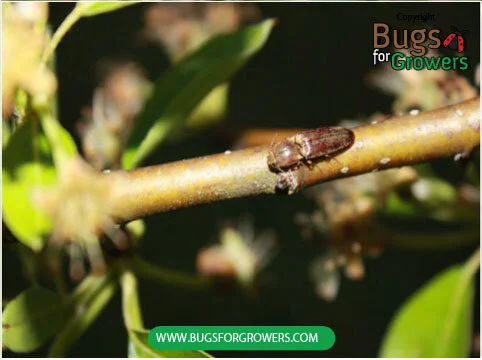Japanese beetles (Popillia japonica) are among the most destructive garden pests in North America, devouring leaves, flowers, and fruit of over 300 plant species (Photo 1 and 2). But the damage starts even before you notice it below the surface, their white grubs feed on the roots of grasses (Photo 3) and plants, causing brown patches in lawns and weakened ornamental plants. While chemical treatments are available, many gardeners and landscape professionals are turning to a safer, more natural method of control: entomopathogenic nematodes, Heterorhabditis bacteriophora
Cutworms are a common pest that attack a wide variety of crops, particularly in the early stages of growth. These soil-dwelling larvae can cause significant damage by cutting through plant stems at or just above the soil surface, leading to plant death. However, as part of an integrated pest management approach, beneficial nematodes like Steinernema carpocapsae and Heterorhabditis bacteriophora offer an effective, environmentally friendly control method that is safe for humans, pets, wildlife, and pollinators. Beneficial nematodes are microscopic, soil-dwelling roundworms that naturally parasitize many insect pests, including cutworms.
Greenhouse whiteflies (Trialeurodes vaporariorum) and the sweet potato whiteflies (Bemisia tabaci) pose a significant threat to greenhouse and field vegetables. Beneficial nematodes like Steinernema feltiae are microscopic roundworms used for biological control of various insect pests including whiteflies.
Predatory mites, formally known as Stratiolaelaps scimitus (formerly Hypoaspis miles), are currently employed for the biological control of fungus gnats (Bradysia spp.).
A new species of entomopathogenic nematode named Steinernema sandneri has been recently reported from Poland.
Beneficial predatory Stratiolaelaps scimitus (Hypoaspis miles) mites are considered as excellent biological agents to target and kill the soil-dwelling pupae of the western flower thrips that present in the soil.
Beneficial enetomopathogenic Steinernema carpocapsae and Steinernema riobrave nematodes have potential to be used as best biological control agents for controlling wireworms infesting wheat crops.
Beneficial entomopathogenic Steinernema carpocapsae nematodes are currently used as excellent biocontrol agents for the control of shore flies.
All the larval (maggots) stages of fungus gnats cause direct damage to many ornamental plants by chewing or stripping and tunneling on their healthy root and stem tissues.









Based on both the morphological and molecular characteristics, the entomopathogenic nematodes collected from different parts of the Mizoram were conspecific to Steinernema sangi.